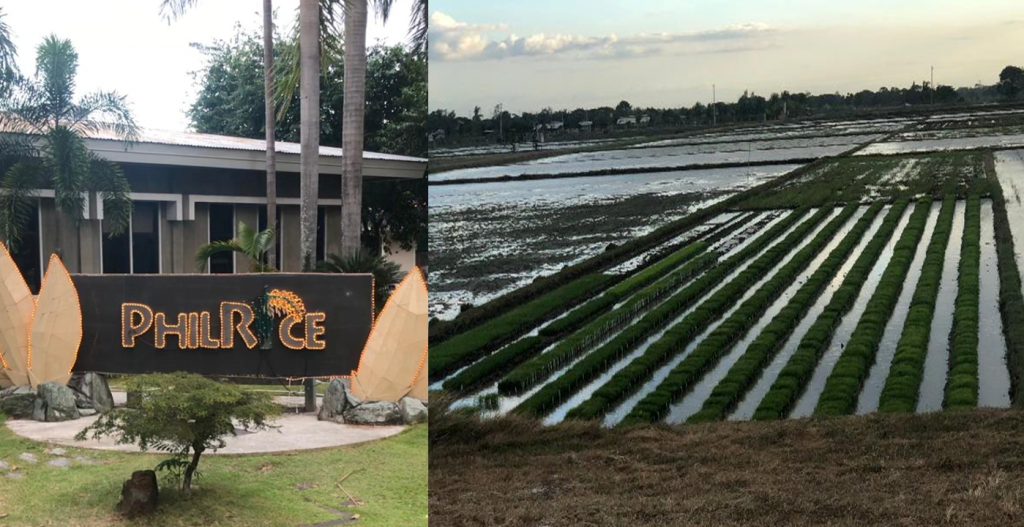
The recent launching of Advanced Rice Technology (ART) Program of the provincial government hatched the idea of bringing the Philippine Rice Research Institute (PhilRice) to Bohol.
Gov. Arthur Yap personally asked Dr. Eduardo Jimmy Quilang, the acting deputy executive director of PhilRice, to put up a PhilRice satellite branch in Bohol.
PhilRice has its Central Experiment Station in Maligaya, Science City of Muñoz in the province of Nueva Ecija and another national research center at the University of the Philippines in Los Baños, Laguna.
In addition, PhilRice has seven branch stations located: at Mariano Marcos State University (MMSU) campus in Batac City, Ilocos Norte; in San Mateo, Isabela; at the UP-Los Baños campus in Laguna; in Batang, Ligao City, Albay; in Cansilayan, Murcia, Negros Occidental; in Basilisa, RTRomualdez, Agusan del Norte; and in Bual Norte, Midsayap, North Cotabato.
Yap told Quilang that the provincial government is willing to provide the facilities for the PhilRice satellite branch in Bohol and the national government will provide the staff.
To start, PhilRice can send three or four personnel and the Office of the Provincial Agriculturist (OPA) will add local personnel.
Quilang had an interaction with the municipal agricultural officers (MAOs) of Talibon, Pilar, Ubay, and San Miguel; farmer technicians from Carmen, Jagna, Candijay, Alicia, Batuan, Dagohoy, and Catigbian; OIC Provincial Agriculturist Dr. Larry Pamugas; and officials of the Pilar Rice Processing Complex and National Irrigation Administration during the opening training course at the PhilRice Central Experiment Station in the Science City of Muñoz, Nueva Ecija on January 9.
Quilang introduced the participants to the new Smartphone apps that aid the farmers in programming their planting-harvesting cycle.
With Quilang were Dr. Norvie Manigbas, the supervising science research specialist of Plant Breeding and Bio-Technology Division of Philrice; and Frisco Malabanan, consultant for hybrid rice program of the Department of Agriculture.
Malabanan was rice program coordinator of DA during the time of Yap as secretary. After retirement, he became SL Agritech consultant and has returned to DA now as consultant.
Aside from the idea of establishing a PhilRice branch here, Yap also suggested that Bohol should have its own soil and water center.
Yap said he had already discussed this with DA Sec. William Dar.
Just like in the terms proposed for the establishment of PhilRice branch here, the provincial government will provide the building and DA will provide the staff.
“Ako lang ipahibaw kaninyong tanan nag-agreement na mi ni Sec. William Dar na magtukod ta ng kaugalingong Soil and Water Center . Ana pod ang akong hangyo nila. Easy pagtukod ng building. Kinsa ang magmanage? I want national government to support sa pagbutang og tao. And, then ang himoon nato ang atong Bohol Soil and Water Center ug ang atong satellite office ng PhilRice,” Yap said.
Yap pointed out that a farmer should know the state of his soil and the state of water to efficiently manage his farm and maximize his land to produce the highest possible yield.
“Ang importante naa kay center for soil and water. Ang damgo nako for Bohol ang tanang mag-uuma nakasabot sa isyu sa tubig ug yuta. Karon ang atong mga mag-uuma bisan asa, banat. Tira. Pero nakasabot ba ka what is the state of soil? What is the state of water? What kind of local specific intervention ang gikinahanglan? What kind of additive ang gikinahanglan? Sa fertilizer, do we need more ammonium sulphate? Do we need more urea? Do we need more potassium? Do we know? We don’t know. If we don’t know, sige ka og bomba ug bomba, then ang presyo nimo per hectare mosaka, But ang output nimo mo-stay put. Mao nga alkansi,” Yap explained.
During the training on January 8-12, PhilRice science research specialists introduced the participants to the ICT tools and resources on agriculture, particularly rice.
Juvy Jane Auñgon, science research specialist II of the Technology Management and Services Division of PhilRice CES, introduced the Minus One Element Technique (MOET) to the participants and the MOET app in Smartphone.
Auñgon used to be assigned at the Agronomy, Soils and Plant Physiology Division of PhilRice CES.
She explained that the MOET app guides the farmers in his fertilizer application plan as it helps “compute the appropriate field fertilizer requirements of a particular irrigated lowland rice cultivar and predict the rice yield”.
Another Smartphone app introduced by PhilRice to the participants was the LCC (Leaf Color Computing) app which was explained by Jose Emmanuel Hernandez, also a science research specialist at the Agronomy, Soils and Plant Physiology Division of PhilRice CES.
LCC app “is used to determine the Nitrogen fertilizer needs of rice crops”.
Hernandez demonstrated to the participants how to use the LCC app in determining the greenness of the rice leaf, which indicates its N content”, showing the four green strips of LCC app, “with color ranging from yellow green to dark green”.
The participants were also introduced to the AgRiDOC app, the eDamuhan app, and the Binhing Palay app.
Nehemiah Caballong, information systems researcher at PhilRice, explained that the AgRiDOC app is a mobile rice farm management application tool, while eDamuhan app is a weed recognition app, and the Binhing Palay app helps determine the rice variety that is appropriate in an area.
